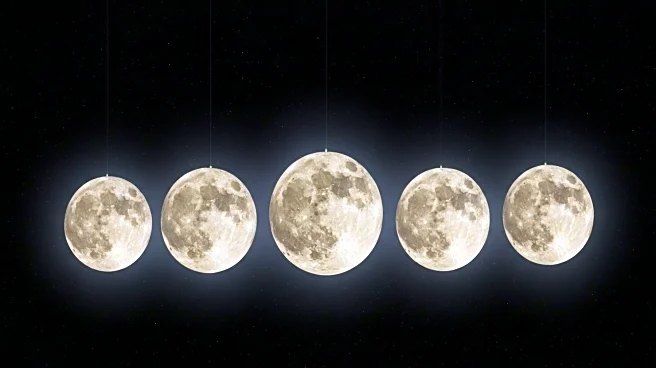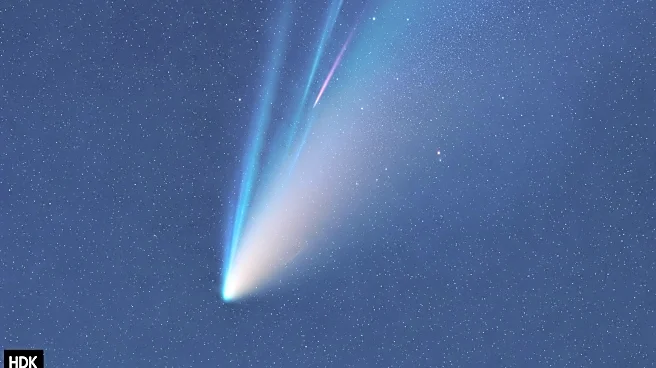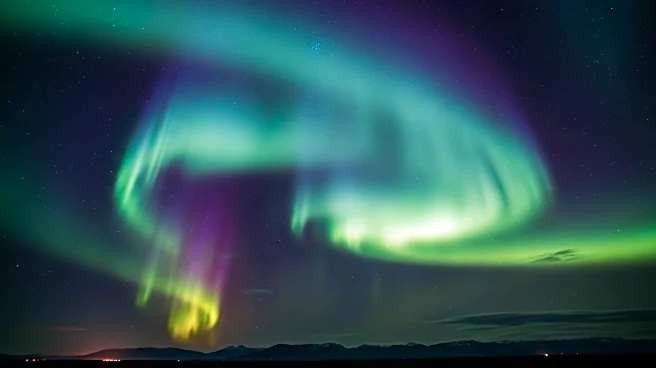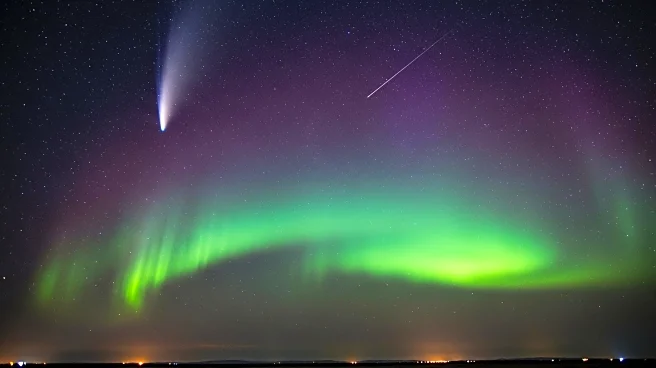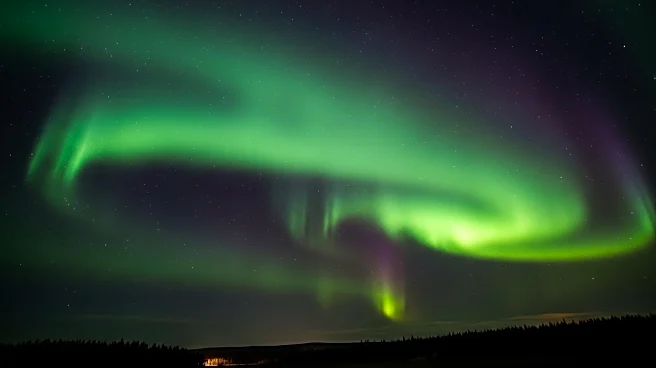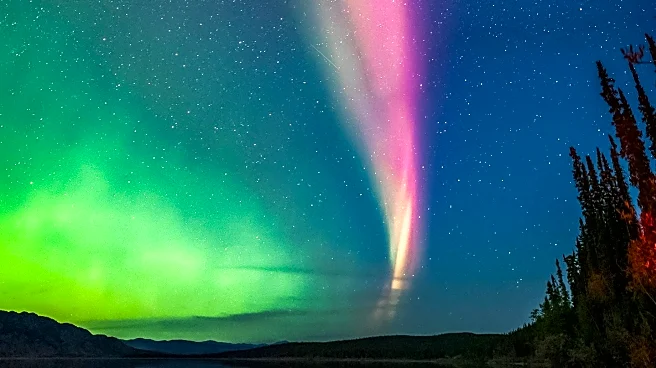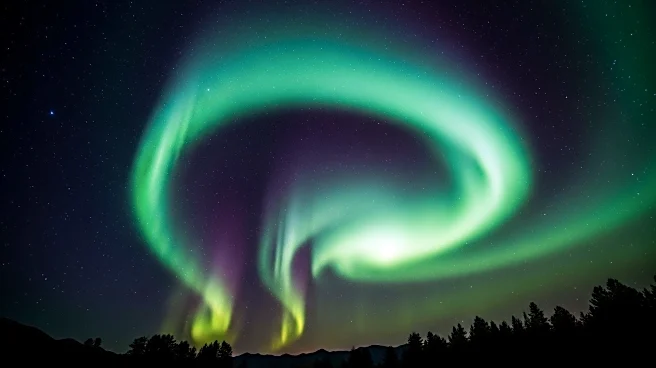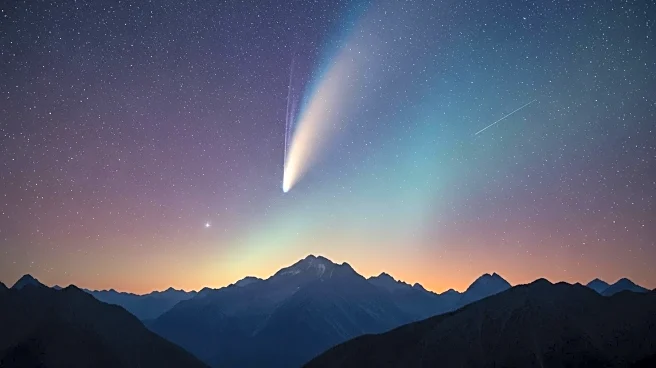What is the story about?
What's Happening?
As the sun enters the declining phase of its 11-year solar cycle, experts predict an increase in auroral activity. This period, described as the sun's 'last gasp,' could lead to powerful geomagnetic storms and impressive auroras visible from Earth. Solar physicist Tamitha Skov explains that the declining phase is marked by long-lived coronal holes and high-speed solar winds, which can cause more frequent geomagnetic storms. These conditions are expected to persist for the next two years, offering skywatchers extended opportunities to observe the northern lights.
Why It's Important?
The increase in geomagnetic activity has significant implications for both technology and skywatchers. While auroras provide stunning natural displays, the associated geomagnetic storms can disrupt satellites, GPS networks, and communication systems. This poses challenges for industries reliant on these technologies. However, for aurora enthusiasts, the coming years promise exceptional viewing opportunities, potentially extending to lower latitudes than usual.
What's Next?
Scientists anticipate that the sun's 'last gasp' could occur within the next two years, driven by complex sunspot groups. If these sunspots face Earth and remain active, they could trigger extreme geomagnetic storms, classified as G5 events. Such storms have the potential to produce auroras visible far from the poles, offering rare viewing experiences.
Beyond the Headlines
The anticipated increase in auroral activity highlights the dynamic nature of the sun and its impact on Earth. It underscores the need for continued monitoring and research to mitigate the effects of solar activity on technology and infrastructure.
AI Generated Content
Do you find this article useful?


